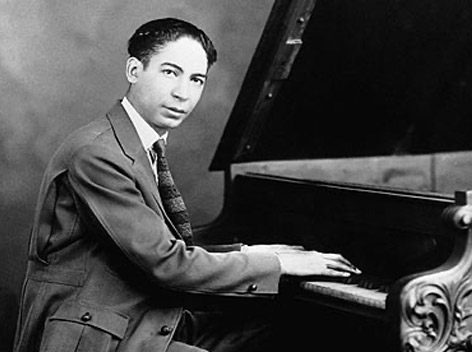
Migration and the Migrant God
In 1997, Dr. Charles Ringma was appointed Professor of Missions and Evangelism at Regent College, a post that he held until he became Professor Emeritus in 2005. Dr. Ringma has written several books on Christian spirituality, and a book on lay empowerment. Key publications include Cry Freedom: with Voices from the Third World; Catch the Wind: The Shape of the church to Come, and Our Place in It; and The Seeking Heart: A Journey with Henri Nouwen.
Migration and the Migrant God
This article is adapted from a “Theology-on-Tap” talk, presented by Charles Ringma on February 5, 2017 at the Crown Hotel, Lutwyche, Brisbane.
Introduction: Migration as Contemporary Controversial Topic
We live in a world on the move. In the global economy we voluntarily relocate for jobs, education, and social mobility, and people constantly relocate involuntarily due to oppression, conflict, and natural disasters. Sociologists have pointed out that displacement and migrancy have become the dominant themes of our age.[1] As the nomads of the modern world, we live increasingly with a sense that we have lost our home, whether that be our society, work, politics, church, or planet. It seems that a fundamental instability and insecurity has invaded us.
As we speak, some 700,000 people are on domestic and international flights. Some 60 million refugees are dislocated[2] and over 244 million people are living outside of their country of origin.[3] Here in Australia, 28.2% of the population were born overseas.[4] This massive movement of people has given rise to all sorts of problems and fears. Assimilation[5] has not always worked well: in the worst cases, multiculturalism has been accompanied by the emergence of xenophobic attitudes in segments of the population. Little wonder that the move now is towards various forms of protectionism and isolation.
Wrestling with these issues and undergoing positive social and political action is of paramount importance. Today, though, I wish not to wrestle with modern issues of displacement on a political level, but to explore the issue from a psychological and theological angle. I will begin with the psychology of the migrant experience seen through the eyes of the migrant, with illustration from my own migrant experience. From there, I will explore theological significance of migration, with the ultimate conclusion that our own experiences of migration should be understood in relation to the God who is himself a migrant.
The Inner Shape (or Gestalt) of the Migrant Experience
In the physical sense, migrancy is simply the leaving of one place for another. But the emotional and spiritual reality—the inner shape—of the migrant experience is much more complex than the physical. Relocating a self that was formed and nurtured in one place to reside in a brand new environment will inevitably have a deep impact one’s sense of self.
When I came to Australia at the age of ten, I was excited about coming to an exotic country and becoming an Aussie as quickly as possible. Despite a year or two of being regularly called a “dago” and told to go back where I came from, my salvation lay in becoming a good left-hand spin bowler in the cricket team. Thus, in time, all went well in becoming an Aussie. I have been trying to make use of the spin bowl ever since!
But there were counter winds. I lived in a Dutch home. I attended a Dutch church. Many friends were Dutch. I married a Dutch wife. At seminary I read a lot of Dutch theologians. In visits to my extended family who still lived in Holland, I felt a sense of deep connection. I was proud of my grandparent’s and my parent’s involvement in the underground resistance in World War II. These winds continued to blow even though I felt deeply connected to Australia.
So where did that leave me? What was I? An Aussie, a Dutchie, or both—or neither?
Scholars have identified the first broad possibility of the migrant experience as being in-between two cultures. The idea is this: I will never be fully Australian and am no longer fully Dutch: I am in the margins of both. Thus I am a “divided self.”[6] This is basically a negative view and can lead to a problematic experience. In Victor Turner’s discussion of liminality, with its move from structure to anti-structure to new structure,[7] the in-between experience is to remain in the anti-structure phase with all its vulnerabilities and challenges.
The much more positive view is that I am in-both. Rather than seeing myself as being in neither, I live with the richness of complementarity and integration. Here is the beginning of the move towards new structure.
Living in-between can so easily lead to feeling alienated and marginalized, resulting in a victim mentality. But living in-both can lead to a celebration of a certain richness. The in-both mentality can allow one to view a new societal home from a different perspective—that of an insider-outsider. This applies not only to the migrant, but also to minority groups in a society. When I adopt the insider-outsider viewpoint, I don’t necessarily see things better than others—but I certainly attain a unique and valuable point of view.
The Bible and Migration
Understanding the inner shape of migrant experience is vital. However, my wife Rita and I have found that our understanding of our experience is also formed by reading Scripture. The grand scriptural narrative informs our own smaller narratives.
Many central elements of the biblical narrative relate to the migrant experience:
- Scriptural narratives that feature people on the move—Abraham, Jacob, the Israelites out of Egypt, the Israelites sent into Babylonian captivity, the dispersion of the Jewish Diaspora throughout the Roman Empire, and the missionary journeys of the early church.
- Scriptural narratives featuring economic migration—that is, migration due to drought conditions and the threat of starvation (Genesis 26:1; Ruth 1:1) or due to war (Jeremiah 14:12).
- The identity of the people of Israel was fundamentally marked by the reality of being wanderers who had been delivered out of oppression.[8] This was their core confession: “A wandering Aramean was my father. And he went down into Egypt and sojourned there...the Egyptians treated us harshly...and the Lord heard our voice and saw our affliction...And the Lord brought us out of Egypt...with signs and wonders” (Deuteronomy 26:5-8, ESV).
- This archetypal act of deliverance from oppression was to be so normative for Israel that it was to typify their behaviour towards others: “Love the sojourner, therefore, for you were sojourners in the land of Egypt” (Deuteronomy 10:19).
- In the New Testament, the iconic migration is the incarnation: “And the Word became flesh and dwelt among us” (John 1:14). Our identification with Jesus, the incarnate One, renders us migrants. Throughout its pages the New Testament calls us “exiles” and “sojourners” (1 Peter 1:1; 2:11). Thus we are in-both. We are in Christ and we are in the world. The Vatican II documents rightly identified believers as “pilgrims” and the whole church as a “pilgrim church.”[9] They immediately go on to note that our “pilgrim” identity—the fact that “we seek the city which is to come”—does not mean “that we evade our earthly responsibilities.”[10] In fact, the opposite is true. Our fundamental “pilgrim” status should cause us to prophetically engage the world in the light of God’s final future of healing and restoration (Revelation 21:1-4; 22:1-5).[11]
Can We Speak of a Migrant God?
I believe that we can and should call the God of the Bible a migrant God. A lot of our language about God is the language of distance: we speak of God as omnipotent and so on. But we also need to recognise the language of relationship. One way to do this is to see God as the one who journeys with us.
The Notre Dame theologian, Daniel Groody, and the Asian scholar, Athena Gorospe, have spelled this out:[12]
- God self-identifies as the wandering God: “but I have been moving about in a tent for my dwelling” (2 Samuel 7:6). This wandering aspect of God is one of the reasons Samuel is so concerned about David’s desire to build a temple for Yahweh.
- God is the God of the journey. This is most clearly expressed in God’s journey with his people as a cloud by day and a pillar of fire by night (Exodus 13:20-22).
- God is the exiled God: the glory of God leaves the temple (Ezekiel 8:1 to 11:25) and God joins his people in exile. As the Old Testament scholar Walter Brueggemann points out, “the glory [of Yahweh] is along with Israel in exile...with this humiliated [and] abandoned people.”[13]
- God as the migrant God is clearly seen in the NT narrative: for example, Jesus’ refugee status in the flight from Herod’s killing fields; Jesus’ marginal status as coming from the rogue province of Galilee; his non-professional status in the hierarchical society of his time; his itinerant ministry in Palestine; his subsequent transition from outskirts to the centre of power in Jerusalem; and, most centrally, his migration into human form in the incarnation.
Closing Reflections: God With Us on the Road
The first and most obvious thing that should be said is that our life’s experiences are not to be negated but need to be brought with us in our reading of Scripture, our prayers, and our engagement with the wider world.
Some of life’s experiences are more significant than others and, therefore, have been more formative. We need to make such experiences productive. In my case, being a migrant has been a blessing. It has made me aware of loss and gain. It has made me open to the other, to those who are strange and different.[14] It has made me somewhat comfortable with ambiguity and liminality.[15] And, as I have already indicated, it has brought me into contact with the God on the road rather than simply the static God in the temple.
You may feel at this point: “what on earth has all of this to do with me? I am not a migrant; Ringma’s experience is his own.” So let me then make the point: any experience that disassembles us, strips us bare, and takes us out of our comfort zone can be approximate to the migrant experience. And whether that be a relationship breakdown, loss of a loved one, a job loss, or a health crisis, one can end up in a sort-of “no man’s land”—akin to Victor Turner’s liminality and anti-structure.
It is at this point that we need a messy, rather than a tidy God. We need God in the tabernacle, not the temple. We need a God in the midst of our ambiguity, pain, lament, confusion, and questioning. We need a God at the margins. We need the migrant God. And we need to make our times of vulnerability productive—to allow them to help us realize our true condition in the world, and to open us to respond to others who are hurting or on the margins.
The pilgrim, from the Latin peregrines, means a foreigner or exile.[16] Rather than seeing this as a brief aberration in one’s life, our pilgrim status should be seen as a “metaphor of the human condition.”[17]
Thus in the beginning was not the
homestead, but “in the beginning was the road.”[18]
And the God of the Bible is the God of the journey.
[1] S. Bouma-Prediger & B. J. Walsh, Beyond Homelessness: Christian Faith in a Culture of Displacement (Grand Rapids: Eerdmans, 2008), p. 7.
[3] www.unfpa.org/migration (2015).
[5] Robert E. Park has identified various stages in the assimilation process of migrants: contact/encounter; competition/conflict; accommodation where competition and conflict are increasingly minimized; and finally assimilation where the migrant becomes one with the dominant culture, in Jung Young Lee, Marginality, p. 36.
[6] Jung Young Lee, Marginality, p.46.
[7] Victor M. Turner, The Ritual Process: Structure and Anti-Structure (New York: Cornell University Press, 1969).
[8] See J. S. Croatto, Exodus: A Hermeneutics of Freedom. Translator S. Attanasio (Maryknoll, NY: Orbis Books, 1981).
[9] “Lumen Gentium” in A. Flannery, ed., Vatican Council II. The Basic Sixteen Documents (Northport, NY: Costello Publishing Co., 1996), p. 72-78.
[10] “Gaudium et Spes” in A. Flannery, ed., Vatican Council II, p. 211.
[11] For a theology that helps us to think in these terms see Jurgen Moltmann, Theology of Hope. Translator J. W. Leitch (Minneapolis: Fortress Press, 1993).
[12] A. O. Gorospe, “What Does the Bible Say About Migration? Three Approaches to the Biblical Text,” in C. R. Ringma, K. Hollenbeck-Wuest, & A. O. Gorospe, eds., God at the Borders: Globalization, Migration and Diaspora (Manila: OMF Lit., 2015), p. 152-159.
[13] W. Brueggemann, The Land: Place as Gift, Promise and Challenge in the Biblical Faith. 2nd Edition (Philadelphia: Fortress Press, 2003), p.131. Quoted in A. O. Gorospe, “What Does the Bible Say About Migration,” p. 157.
[14] See A. Shepherd, The Gift of the Other: Levinas, Derrida, and a Theology of Hospitality (Eugene, OR: Pickwick Publications, 2014).
[15] Turner, The Ritual Process: Structure and Anti-Structure.
[16] Frederic Gros, A Philosophy of Walking. Translator John Howe (London: Verso, 2014), p.107.
[17] Ibid., 110.
[18] Ibid., 118.


